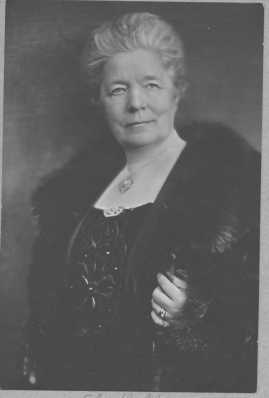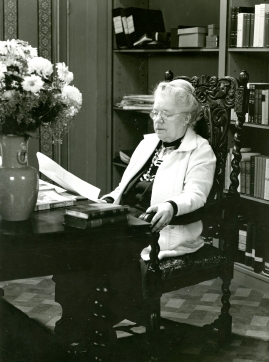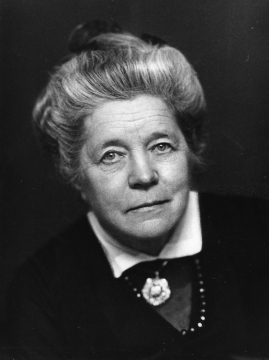Selma Lagerlöf
Table of contents
Basic facts
Media (3)
| Author |
|
|---|---|
| Cast | |
| Show all films |
Biography
Selma Ottilia Lovisa Lagerlöf was a Swedish author. She was the first female writer to win the Nobel Prize in Literature, and most widely known for her children's book Nils Holgerssons underbara resa genom Sverige (The Wonderful Adventures of Nils).Born at Mårbacka (now in Sunne Municipality) an estate in Värmland in western Sweden, Lagerlöf was the daughter of Lieutenant Erik Gustaf Lagerlöf and Louise Lagerlöf née Wallroth. The couple's fourth child, she was born with a hip injury. An early sickness left her lame in both legs, although she later...
Links and resources
Biography
Selma Ottilia Lovisa Lagerlöf was a Swedish author. She was the first female writer to win the Nobel Prize in Literature, and most widely known for her children's book Nils Holgerssons underbara resa genom Sverige (The Wonderful Adventures of Nils).
Born at Mårbacka (now in Sunne Municipality) an estate in Värmland in western Sweden, Lagerlöf was the daughter of Lieutenant Erik Gustaf Lagerlöf and Louise Lagerlöf née Wallroth. The couple's fourth child, she was born with a hip injury. An early sickness left her lame in both legs, although she later recovered. She was a quiet child, more serious than others her age, with a deep love of reading. The sale of Mårbacka following her father's illness in 1884 had a serious impact on her development.
Lagerlöf worked as a country schoolteacher in Landskrona for nearly 10 years while honing her story-telling skills, with particular focus on the legends she had learned as a child. Through her studies at the Royal Women's Superior Training Academy in Stockholm, Lagerlöf reacted against the realism of contemporary Swedish language writers such as August Strindberg. She began her first novel, Gösta Berling's Saga, while working as a teacher in Landskrona. Her first break as a writer came when she submitted the first chapters to a literary contest, and won a publishing contract for the whole book. [---]
A 1900 visit to the American Colony in Jerusalem became the inspiration for Lagerlöf's book by that name. By 1895, she gave up her teaching to devote herself to her writing. [---]
Many of Lagerlöf's works have been adapted to cinema. Already during the 'Golden Age' of Swedish silent cinema her works were used in film by Victor Sjöström, Mauritz Stiller and other Swedish cinema pioneers. Sjöström's retelling of Lagerlöf's tales about rural Swedish life, in which his camera recorded the detail of traditional village life and the Swedish landscape, provided the basis of some of the most poetic and memorable products of early silent cinema. Jerusalem was adapted in 1996 into an internationally acclaimed motion picture.
Wikipedia (2011-05-10)
Films
| Screenplay |
|
|---|---|
| Cast |
|
| Titles |
|
| Narrator |
|
Original work
| Author |
|
|---|
Soundtrack listing
| Lyrics |
|---|



